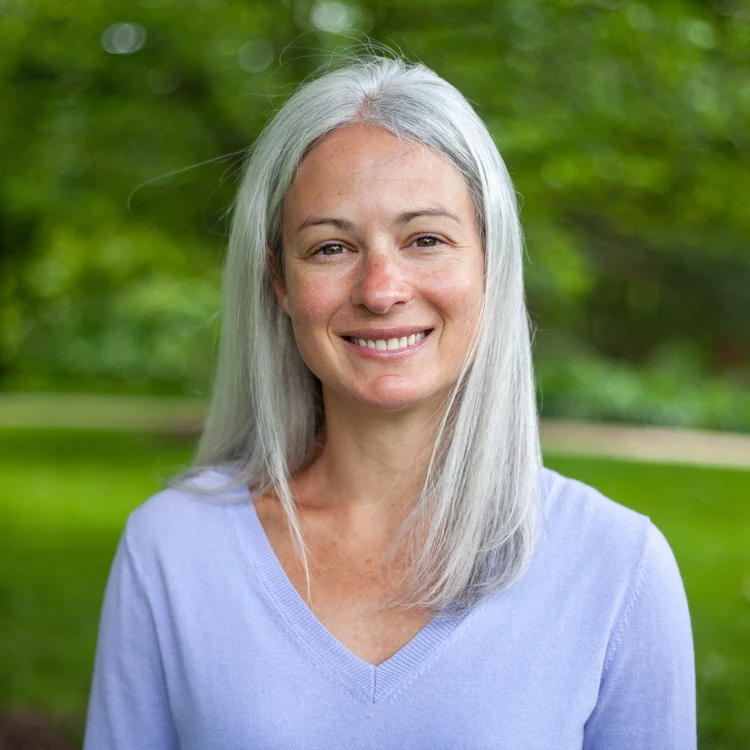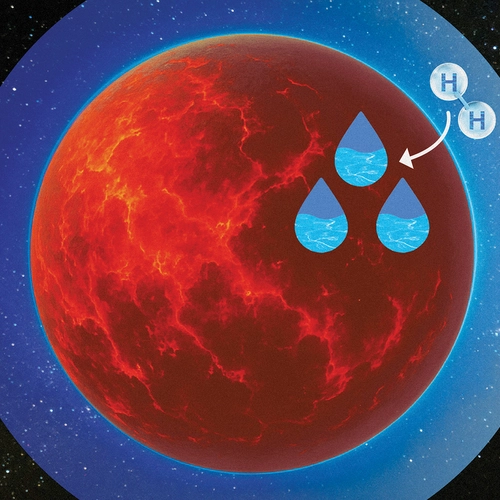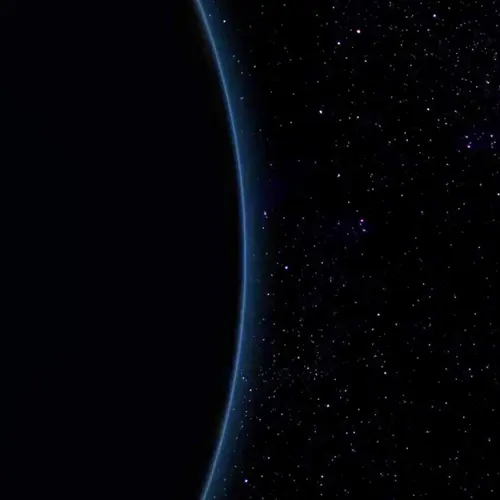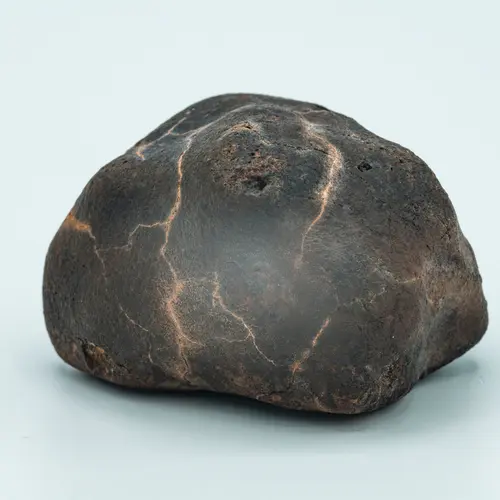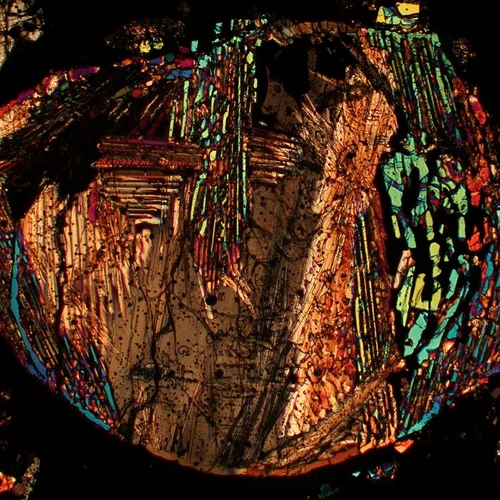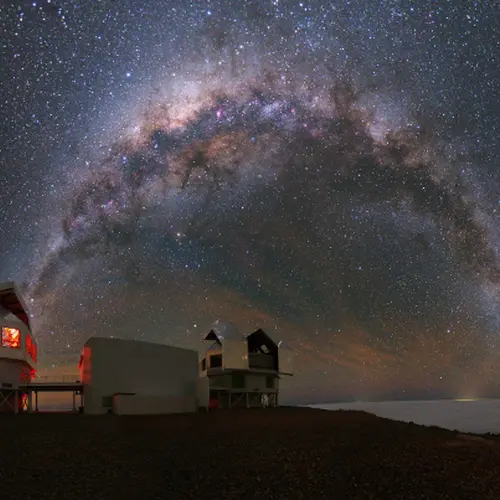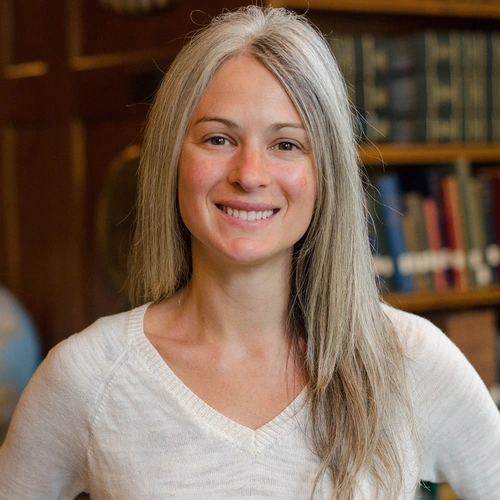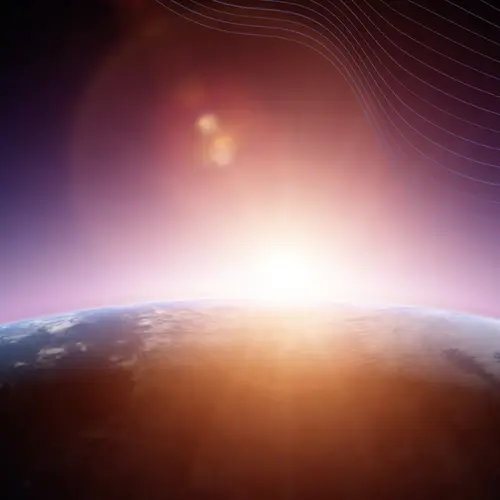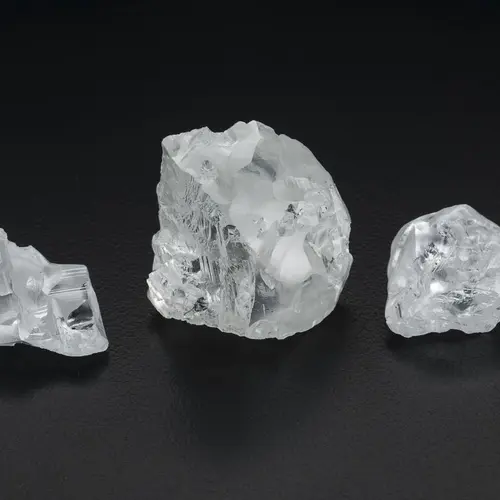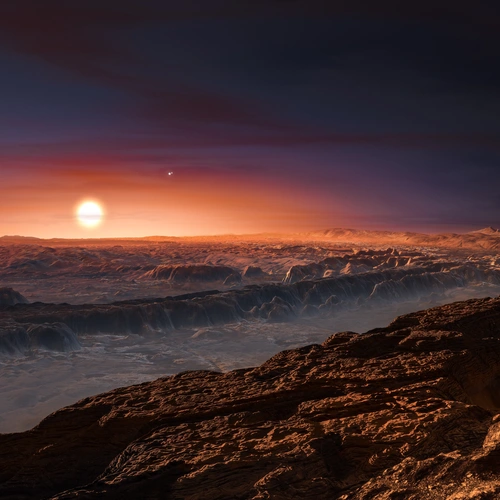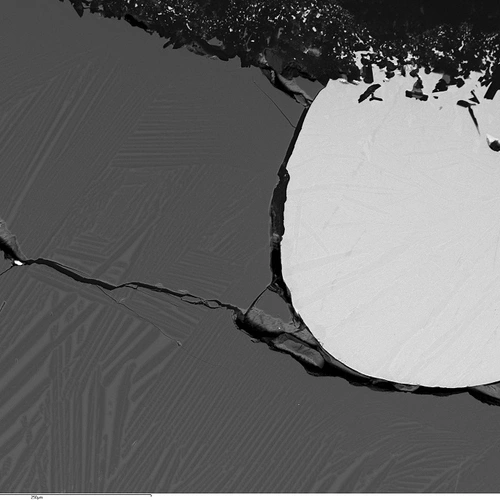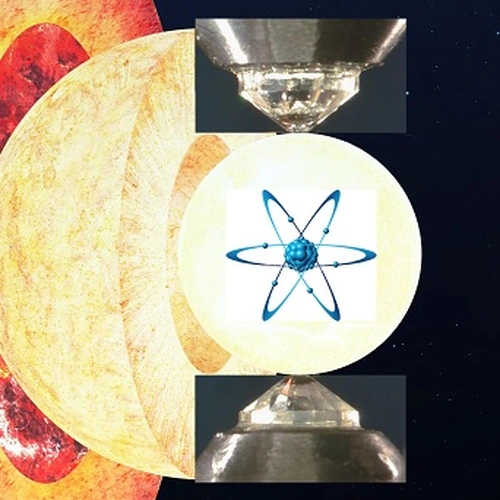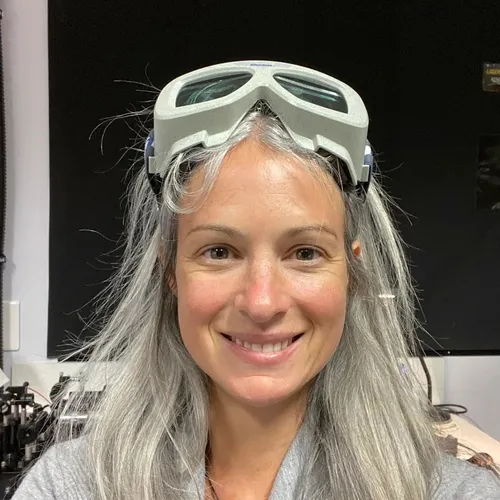Overview
Anat Shahar's research blends isotope geochemistry with high-pressure experiments to examine the Solar System's formation, planetary formation, core formation and planetary evolution. Stable isotope geochemistry is the study of how physical and chemical processes can cause isotopes—atoms of an element with different numbers of neutrons—to separate (called isotopic fractionation). Experimental petrology is a lab-based approach to increasing the pressure and temperature of materials to simulate conditions in the interior Earth or other planetary bodies.
Shahar received her B.S. and M. Eng. from Cornell University in geological engineering and geological sciences, respectively. She received her Ph. D. in geochemistry from UCLA. Before becoming a staff scientist in 2009 she was a Carnegie postdoctoral fellow.
Research
Carnegie’s Anat Shahar is the lead investigator on an interdisciplinary, multi-institution research team that was awarded nearly $1.5 million from the Alfred P. Sloan Foundation in the spring of 2021 to understand the chemical makeup of our galaxy’s most common planets with a goal of developing a framework for detecting chemical signatures of life on distant worlds.
AEThER combines astronomy, astrophysics, cosmo- and planetary chemistry, planetary physics and dynamics, experimental and theoretical petrology, and mineral physics to answer fundamental questions about the nature of exoplanetary solar systems and the characteristics that lead rocky planets to have clement surfaces suitable for the development of life. The final product of this project will be a new perspective on what kinds of planets in what stellar environments are most likely to develop habitable surfaces where life can thrive and then be remotely detected.
Explore this projectInitial studies in the 1970s and earlier suggested that pressure was not an important variable for understanding isotope fractionation factors. It was thought that pressure was negligible in fractionating isotopes. However, in 2016 Shahar and her team performed an extensive study on how pressure affects iron isotopic ratios in a range of metallic alloys. They found that pressure has an important effect on isotopes and that it varies depending on the light element alloyed with the iron (Shahar et al. 2016).
Our team has conducted research trying to understand what the iron isotopic composition of the Earth's mantle is today and how it came to be that value. We have measured the iron isotopic composition of mantle minerals, conducted experiments on how iron isotopes partition between mineral phases, and measured the iron isotopic ratios within metallic diamond inclusions (Sio et al. 2018; Peters et al. 2019; Smith et al. 2021; Nie et al. 2021; Sossi and Shahar 2021).
Iron meteorites and pallasites represent two kinds of extraterrestrial materials that help us to understand planetary cores and differentiation. Similar to Earth, many large planetesimals in the Solar System experienced planetary-scale processes such as accretion, melting, and differentiation. As their cores cooled and solidified, significant chemical fractionation occurred due to solid metal-liquid metal fractionation. Iron meteorites -- core remnants of these ancient planetesimals -- record a history of this process. We experimentally showed that the Fe isotopic composition of iron meteorites can be explained solely by core crystallization.
Pallasites have been even more enigmatic as they were long thought to be samples of the core-mantle boundary of differentiated asteroids, but more recent work has suggested otherwise. Led by (then) postdocs Corliss Sio and Neil Bennett our team determined the iron isotope compositions of olivine and metal in eleven main-group pallasites and found, in all cases, that olivine is isotopically lighter than metal implying that pallasitic olivine and metal never achieved isotopic equilibrium with respect to iron. The meteorites therefore are best reconciled with an impact origin (Ni et al. 2020; Sio et al. 2022).
Most planetary bodies of a certain size undergo a process termed differentiation in which the body will separate into layers based on its physical and chemical characteristics. This is the most dramatic chemical event a planet undergoes and it completely obscures the bulk composition of the planet as now a huge portion is not attainable for sampling. During this process, the iron and siderophile elements sink to the center to form a core, while the silicates and lithophile elements form a mantle.
Exactly how this process occurs is unclear, however a simplified model suggests equilibrium segregation between metal and silicate in a magma ocean setting. Our team has focused on studying this process by using stable isotopes as tracers of the conditions during differentiation as well as the composition of the planetary core. They have shown that studying the partitioning of stable isotopes between metal and silicate can be used to investigate the scenario of accretion and the nature of Earth’s building blocks as well as the nature and budget of light elements in the core.
Shahar and her team have tackled this problem by investigating the silicon, sulfur, and iron isotope fractionation during core formation (Shahar et al. 2009, 2011; 2015; Labidi et al. 2016; Elardo and Shahar 2017; Elardo et al. 2019; Shahar and Young, 2020; Yang et al. 2022; Ni et al. 2022).
One of the possible light elements in the core of planetesimals/planets is sulfur. While most studies have assumed that redox is the most important variable on iron isotope fractionation we hypothesized that the addition of a light element to the iron metal would alter the isotopic fractionation between the metal and the silicate.
Shahar and her team found that there is a strikingly strong dependence of the fractionation factor between metal and silicate with sulfur content in the iron alloy. These results were highly unanticipated but show that the amount of sulfur in the system dramatically changes the bonding environment of the iron in the alloy and in the melt and has a significant effect on the equilibrium iron isotopic fractionation. Another fundamental aspect of this work is that it opens up a new and independent constraint on the sulfur content in planetary or asteroidal cores. (Shahar et al. 2015)
This work was continued and expanded by Steve Elardo who determined that nickel also has a large effect on iron isotope fractionation and published two papers showing how these data can be used to undertand the iron isotopic ratios of planetary mantles throughout the solar system. (Elardo and Shahar, 2017; Elardo et al. 2019)
How much hydrogen partitions between an early magma ocean and an atmosphere is relevant to the evolution of early rocky planets as well as the origin of a planet’s water budget. An increase in mantle H2 may also lead to more H partitioned into the planet’s metallic core. Postdoc Kara Brugman has conducted experiments at a range of conditions in order to understand what the solubility of hydrogen is within planetary bodies and how it partitions between the rock and the atmosphere. Her preliminary experiments find that copious amounts of hydrogen can be dissolved in a magma ocean, implying that much of the water on a planet could come from this time period in a planet’s evolution. This work is in collaboration with George Cody and James Badro (IPGP).
CV
- Ph.D. in Geochemistry, 2008, UCLA
- Master of Engineering in Geological Sciences, 2003, Cornell University
- Bachelor of Science in Geological Engineering, 2002, Cornell University
- Reginald Daly Lecture, American Geophysical Union, 2021
- Fellow, Mineralogical Society of America, 2016
- MSA Award, Mineralogical Society of America, 2016
- F.W. Clarke Medalist, Geochemical Society, 2015
- Blaustein Fellowship, Stanford University, 2012
- Carnegie Postdoctoral Fellowship, Carnegie Institution of Washington, 2008
- Nininger Award, Arizona State University, 2007
- Dissertation Year Fellowship, UCLA, 2007
- Goldschmidt Travel Grant for Travel to Germany, Geochemical Society, 2007
- Chair’s Fund to attend Gordon Research Conference, NASA, 2007
- Outstanding Student Presentation Award, VGP section of AGU, 2006
- Excellence in Teaching Award, UCLA, 2005 and 2006
- Goldschmidt Travel Grant for Travel to Australia, NSF and GS, 2006
- Cross-Training Fellowship, UCLA, 2005
- Raisler’s M. Eng. Fellowship, Cornell University, 2003
- Henry G. White Scholarship, Cornell University, 2002
- Mineralogical Society of America Undergraduate Award, 2002
- Geophysical Laboratory, Carnegie Institution for Science, Washington DC
Summer 2009 – Present. Staff ScientistThe
- University of Maryland, Department of Geology, Maryland
Winter 2012 – Present. Adjunct Assistant Professor
- Institut de Physique du Globe de Paris, France
2018-2021. Visiting Professor
- CIDER Summer Program, Santa Barbara, California
Summer 2014, 2016. Invited Lecturer and Senior Participant
- Stanford University, School of Earth Sciences, Palo Alto, CA
December 2012 – April 2013. Visiting Professor
- Geophysical Laboratory, Carnegie Institution of Washington, Washington DC
Fall 2008 – Spring 2009. Postdoctoral Fellow
- Department of Earth and Space Sciences, UCLA, California
Winter 2004 – 2008. Graduate Research Assistant
- CIDER Summer Program, Santa Barbara, California
Summer 2004. Student
- Geophysical Laboratory, Carnegie Institution of Washington, Washington D.C.
Summer 2002. Intern
- Rocky Worlds, October 2022
- Goldschmidt, Keynote, July 2022
- Lunar and Planetary Institute, April 2022
- Northwestern University, Department of Earth and Planetary Sciences, February 2022
- Ruhr-Universität Bochum, Institut für Geologie, Mineralogie und Geophysik, January 2022
- Institut de Physique du Globe de Paris, October 2021
- Goldschmidt, Keynote, July 2021
- National Capitol Astronomers, November 2020
- Australian National University, Virtual Seminar, May 2020
- University of North Carolina Chapel Hill, Department of Geological Sciences, February 2020
- American Geophysical Union Fall Meeting Centennial, Keynote, December 2019
- Goldschmidt, Keynote: Non-Traditional Stable Isotope Fractionation at High Temperatures, August 2019
- COMPRES Annual Meeting, Workshop on NRIXS, August 2019
- Institut de Physique du Globe de Paris, May 2019
- AAS-AGU Joint Symposium on Exoplanets, January 2019
- Geological Society of America Annual Meeting, November 2018
- APS NRIXS Workshop, November 2018
- Yale University, Department of Geology and Geophysics, October 2018
- COMPRES Annual Meeting, Keynote, August 2018
- Asia Oceania Geosciences Society Meeting, From Dust to Planets, June 2018
- Stanford University, GES Department Seminar, April 2018
- University of Alberta, Earth and Atmospheric Sciences Dept, Grace Anne Stewart Series, February 2018
- University of British Columbia, Department of Earth, Ocean and Atmospheric Sciences, February 2018
- University of Minnesota, Earth Science Department Seminar, October 2017
- University of Maryland, Geochemistry Seminar, September 2017
- Earth Life Science Institute (ELSI) Seminar Series, August 2017
- MIT, Dept. of Earth, Atmospheric and Planetary Sciences Lecture Series, April 2017
- Kaplan Workshop, The Hebrew University of Jerusalem, Israel, February 2017
- Harvard University, Department of Earth and Planetary Science Colloquium, February 2017
- Princeton University, Department of Geosciences Seminar, October 2016
- University of California Los Angeles, Dept. of Earth, Planetary and Space Sciences Colloquium, April 2016
- Carnegie Observatories Public Lecture Series, April 2016
- American Geophysical Union Fall Meeting, Chemical and Dynamical Constraints on the Formation and Evolution of the Terrestrial Planets, December 2015
- Deep Carbon Observatory International Meeting, March 2015
- Geological Society of America, Frontiers in Non-Traditional Stable Isotopes, October 2014
- Goldschmidt Conference, Keynote: Stable Isotope Fractionation in the Deep Earth, June 2014
- University of Maryland, Dept. of Geology Seminar, April 2014
- University of Amsterdam, Earth Science Department, November 2013
- Stanford University, GES Department Seminar, January 2013
- Washington University, EPS Colloquium, February 2012
- Penn State University, Geosciences Colloquium, April 2011
- University of California Berkeley, Dept. of Earth and Planetary Science Seminar, March 2011.
- Smithsonian Institution, Museum of Natural History, February 2011
- American Geophysical Union Fall Meeting, invited talk in: Physical State of Planetary Cores, December 2010
- Geological Society of Washington, October 2010
- University of Maryland, Dept. of Geology Seminar, September 2009
- Indiana University, Dept. of Geological Sciences Seminar, February 2009
- Goldschmidt, invited talk in: Partitioning among melts, metals and minerals in planetary systems, July 2008
- Carnegie Institution of Washington, Geophysical Laboratory Seminar, July 2008
- Princeton University, Dept. of Geosciences Seminar, April 2008
- Carnegie Institution of Washington, Geophysical Laboratory Seminar, February 2008
Instrumentation
The Nu II Multiple Collector Inductively Coupled Plasma Source Mass Spectrometer is a double-focusing magnetic sector mass spectrometer that is designed to provide precise simultaneous isotope ion detection. It houses 16 Faraday cups as well as five ion-counting electron multipliers capable of measuring isotope ratios of the elements from lithium to uranium.
The lab has two Deltech furnaces for high temperature experiments and sample synthesis, of which one has gas mixing capabilities.
This 150-ton end-loaded piston cylinder apparatus was installed in 2016 and is a typical Boyd and England press capable of reaching pressures up to 3.5 GPa and approximately 2000 C.
Recent Publications
Media
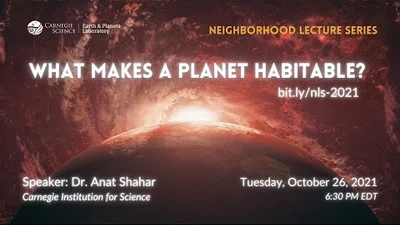
What makes a planet habitable?
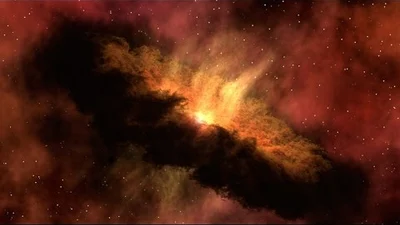
How Do Planets Form?
